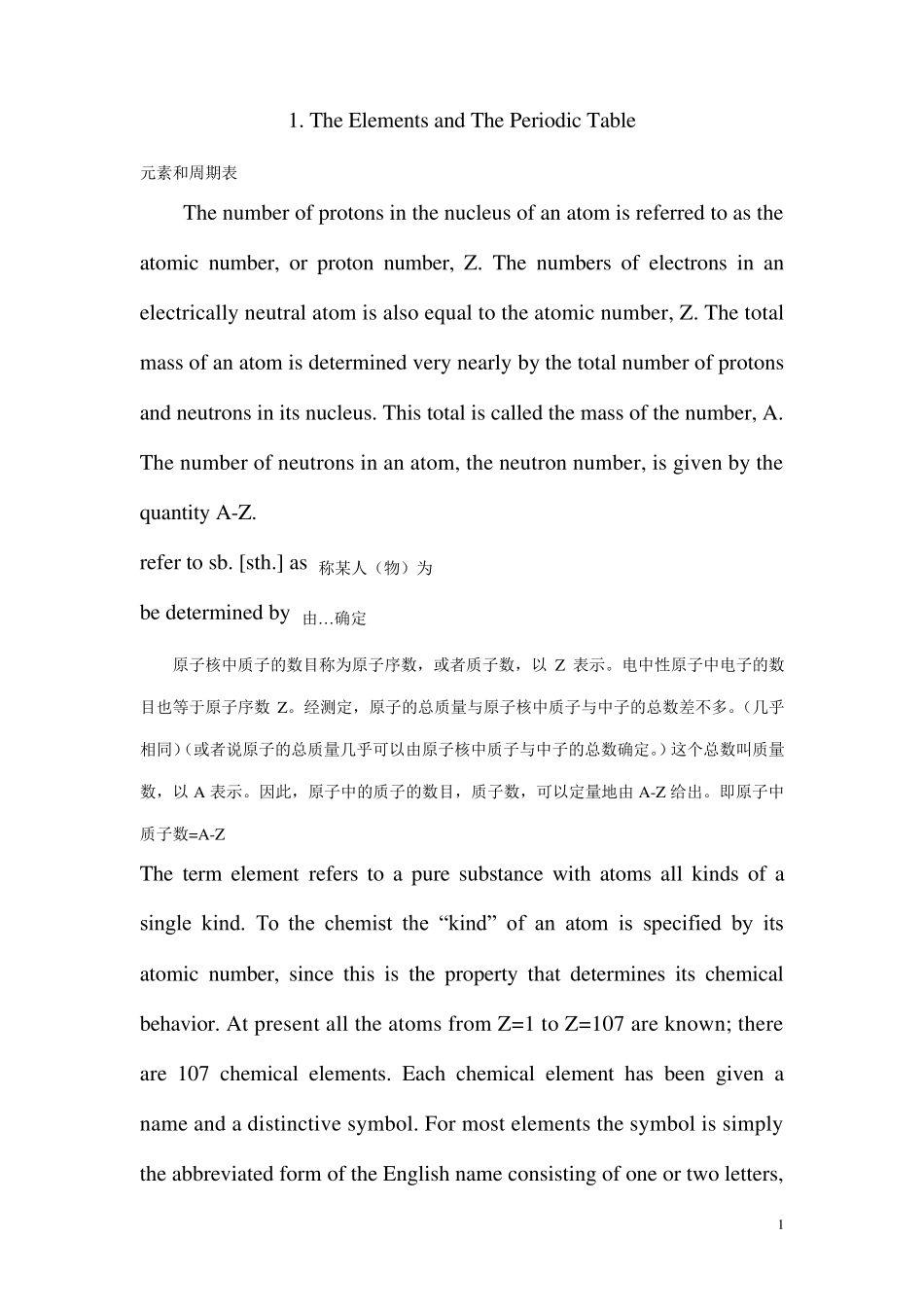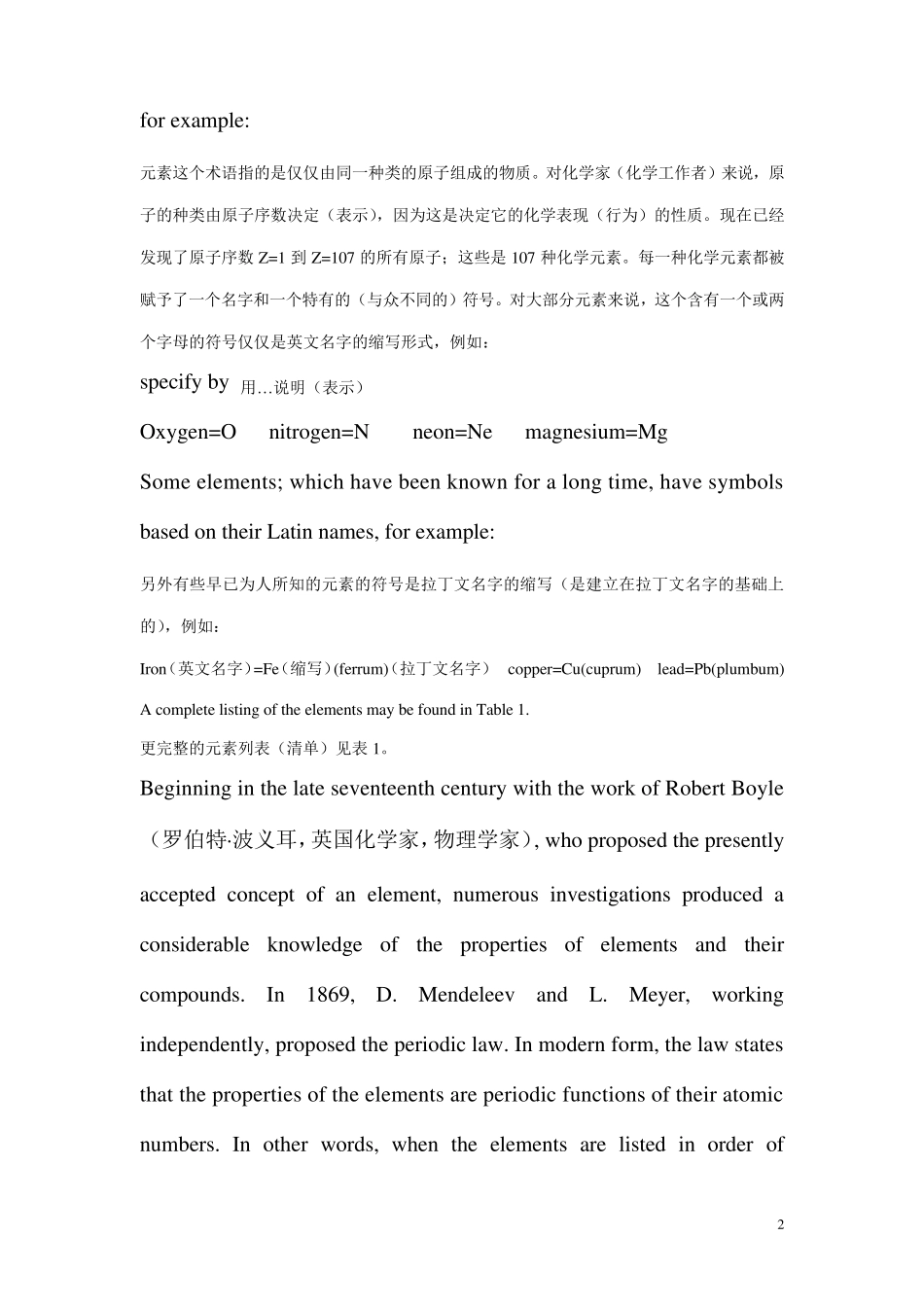1 1. The Elements and The Periodic Table 元素和周期表 The number of protons in the nucleus of an atom is referred to as the atomic number, or proton number, Z. The numbers of electrons in an electrically neutral atom is also equal to the atomic number, Z. The total mass of an atom is determined very nearly by the total number of protons and neutrons in its nucleus. This total is called the mass of the number, A. The number of neutrons in an atom, the neutron number, is given by the quantity A-Z. refer to sb. [sth.] as 称某人(物)为 be determined by 由…确定 原子核中质子的数目称为原子序数,或者质子数,以Z 表示。电中性原子中电子的数目也等于原子序数Z。经测定,原子的总质量与原子核中质子与中子的总数差不多。(几乎相同)(或者说原子的总质量几乎可以由原子核中质子与中子的总数确定。)这个总数叫质量数,以A 表示。因此,原子中的质子的数目,质子数,可以定量地由A-Z 给出。即原子中质子数=A-Z The term element refers to a pure substance with atoms all kinds of a single kind. To the chemist the “kind” of an atom is specified by its atomic number, since this is the property that determines its chemical behavior. At present all the atoms from Z=1 to Z=107 are known; there are 107 chemical elements. Each chemical element has been given a name and a distinctive symbol. For most elements the symbol is simply the abbreviated form of the English name consisting of one or two letters, 2 for example: 元素这个术语指的是仅仅由同一种类的原子组成的物质。对化学家(化学工作者)来说,原子的种类由原子序数决定(表示),因为这是决定它的化学表现(行为)的性质。现在已经发现了原子序数 Z=1 到 Z=107 的所有原子;这些是107 种化学元素。每一种化学元素都被赋予了一个名字和一个特有的(与众不同的)符号。对大部分元素来说,这个含有一个或两个字母的符号仅仅是英文名字的缩写形式,例如: specify by 用…说明(表示)...


